Imagine stepping into your backyard and encountering a lush, vibrant wall of greenery. A vertical garden is the perfect way to maximize space, bring nature closer to home, and create a stunning focal point in your outdoor area. Whether you have a small patio or a spacious backyard, vertical gardens enable you to grow herbs, flowers, or even vegetables without occupying too much ground space.
If you’ve ever considered trying vertical gardening, this guide covers everything you need to know—from the ideal structure to maintaining your plants in excellent condition. So, let’s dive in!
Chose the Right Location for Your Vertical Garden
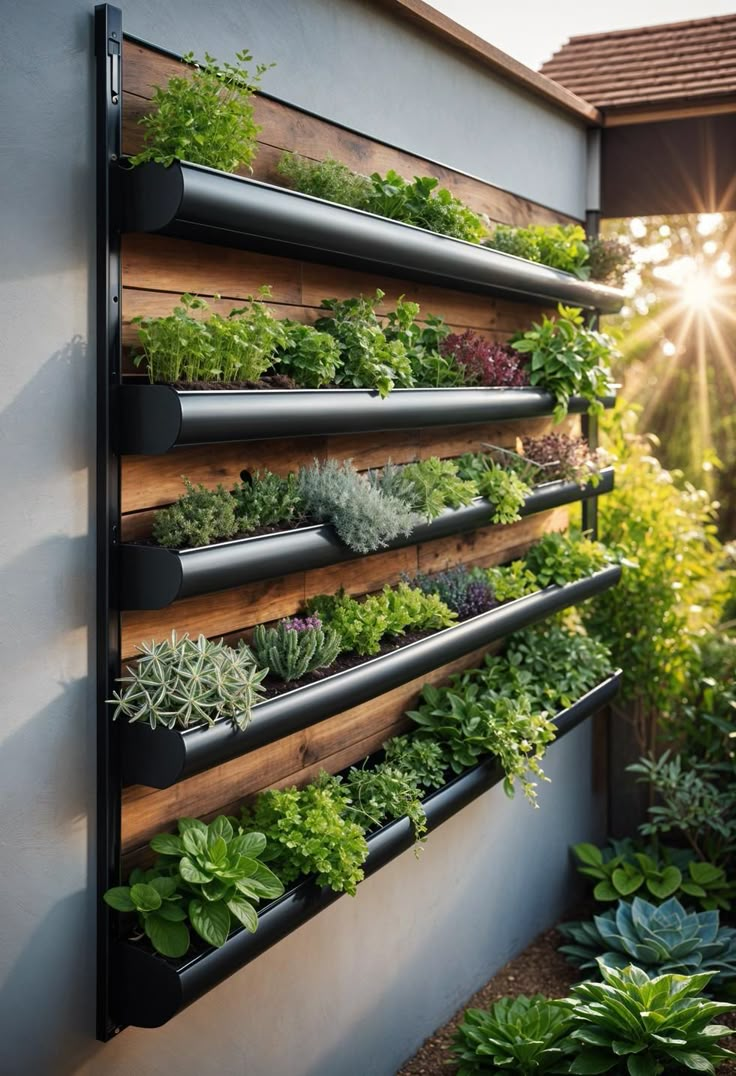
Plan ahead regarding the placement of your vertical garden. Sunlight is crucial—most plants need at least 4-6 hours of direct sunlight daily. If your backyard is more shaded, opt for shade-tolerant plants like hostas or ferns. Additionally, consider wind exposure and the convenience of access for watering and maintenance.
Select a Vertical Garden Structure
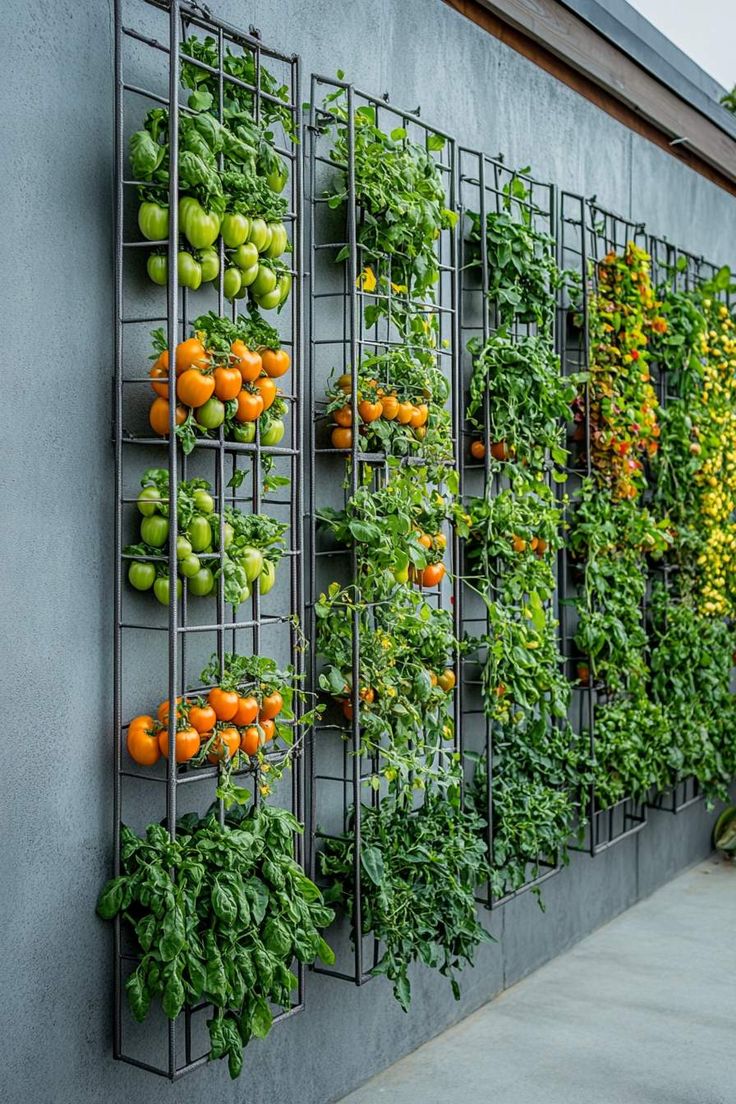
The structure serves as the backbone of your vertical garden, offering numerous options based on your budget and aesthetic preferences. Some popular choices include:
Wall-mounted planters: Ideal for patios or fences.
Hanging pockets: Fabric pockets designed to hold soil and plants.
Stacked wooden shelves: Perfect for achieving a rustic look.
Pallet gardens: A budget-friendly DIY option.
Trellises or metal grids: Excellent for climbing plants like ivy or jasmine.
Select a design that complements your space and enhances your backyard’s aesthetic.
Pick the Right Plants
The plants you select will greatly influence the success of your vertical garden. Take into account the climate in your area and the level of maintenance you can provide. Some excellent options include:
For beginners: Pothos, succulents, ferns.
For herbs and edibles: Basil, mint, strawberries, cherry tomatoes.
For flowers: Petunias, marigolds, pansies.
For climbing plants: Jasmine, ivy, morning glories.
A combination of textures and colors will create a stunning vertical garden.
Use Right Soil and Drainage
Vertical gardens differ from regular ground gardens as they require heavily draining soil. A blend of potting soil with perlite or coconut coir works well. Make sure your containers or pots have sufficient holes for proper drainage to prevent water accumulation, which can lead to root rot.
Watering and Irrigation Tips
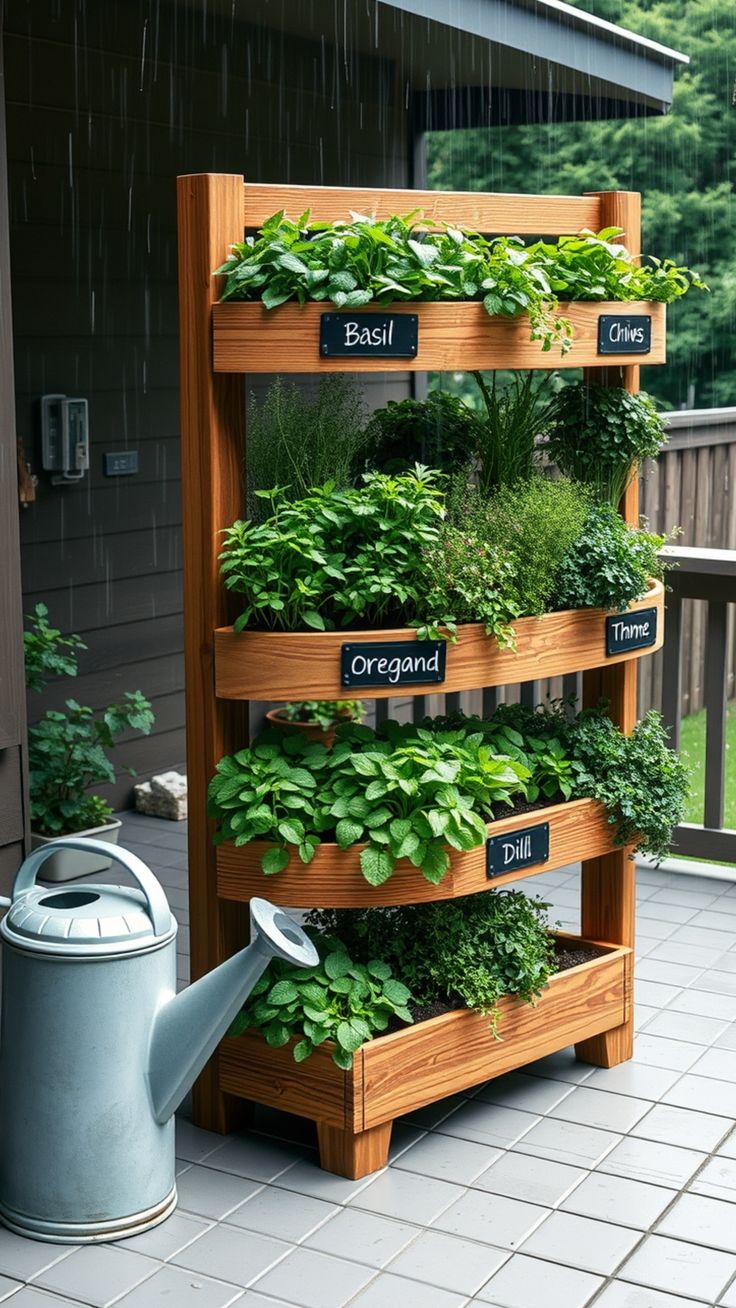
One of the main drawbacks of a vertical garden is water stress: vertical planters dry out more quickly than those at ground level. You’d need a reliable watering system. Here are a few options:
Drip irrigation: set it and forget it—this method slowly waters your plants down to their roots.
Self-watering planters: containers equipped with built-in reservoirs.
Manual watering: simply use a spray bottle or a watering can to tend to the small setups.
Space Plants Appropriately
When potting plants in your vertical garden, consider how each plant will grow:
For taller plants, place them towards the top where their vines can flourish.
Plants that can effectively fill a space can be positioned in the center.
You can use compact herbs and flowering plants at the bottom.
This proper positioning allows for even light distribution without overcrowding the spaces.
Add That Special Touch
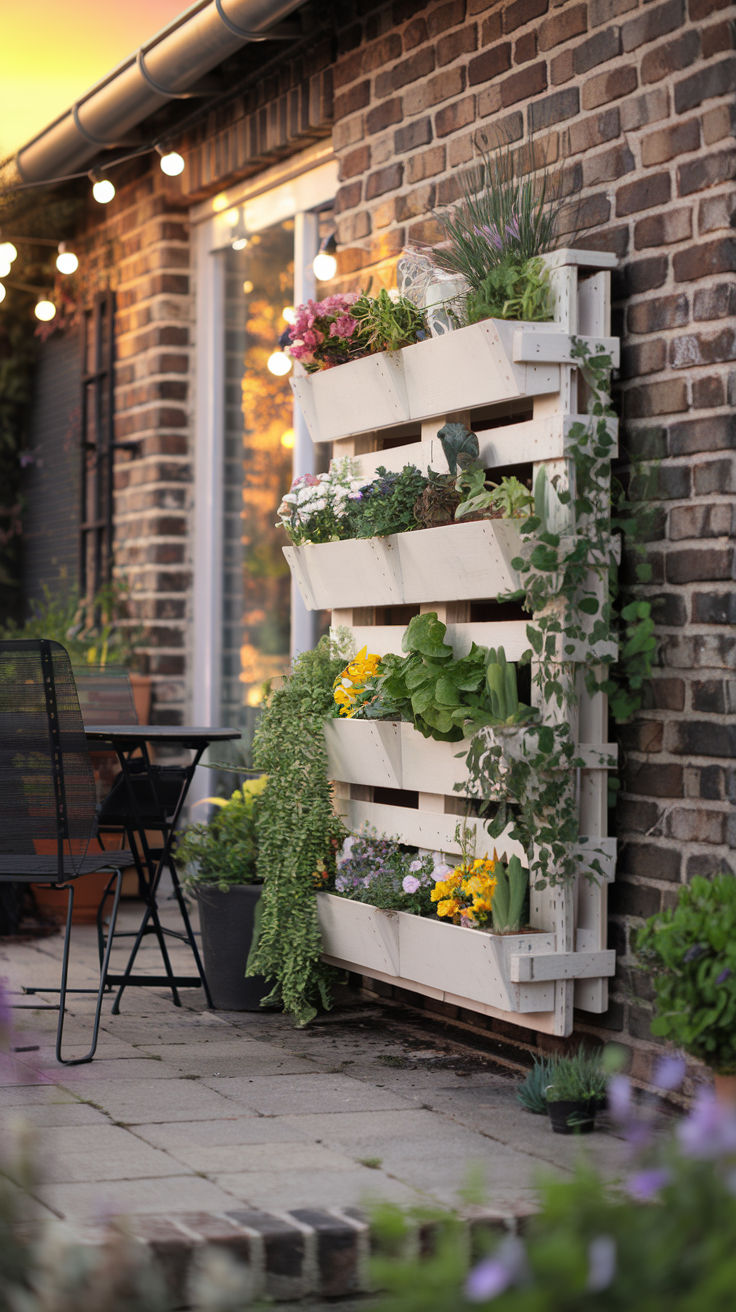
A vertical garden is not only functional; it can also reflect your personality. Adding decorative touches like string lights, painted pots, or wooden frames makes your garden stand out. For a modern look, sleek black planters work well. For a rustic feel, a repurposed wooden pallet will suffice.
Maintenance and long-term care
Just like any garden, your vertical setup requires regular maintenance. Here’s how to keep it thriving:
Check for pests such as aphids and spider mites.
Trim overgrown plants to maintain shape and enhance air circulation.
Refresh nutrients with compost or organic fertilizer every few months.
Rotate plants seasonally if needed.
With proper care, your vertical garden will thrive throughout the year!
Final Thoughts
A vertical garden in your backyard is a fulfilling project that merges beauty with functionality. Whether you aim to cultivate fresh herbs for cooking, introduce a touch of greenery to your patio, or maximize a limited space, a vertical garden serves as an excellent solution. With the appropriate setup, plant selection, and care, you’ll create a flourishing green wall that enriches your outdoor area.
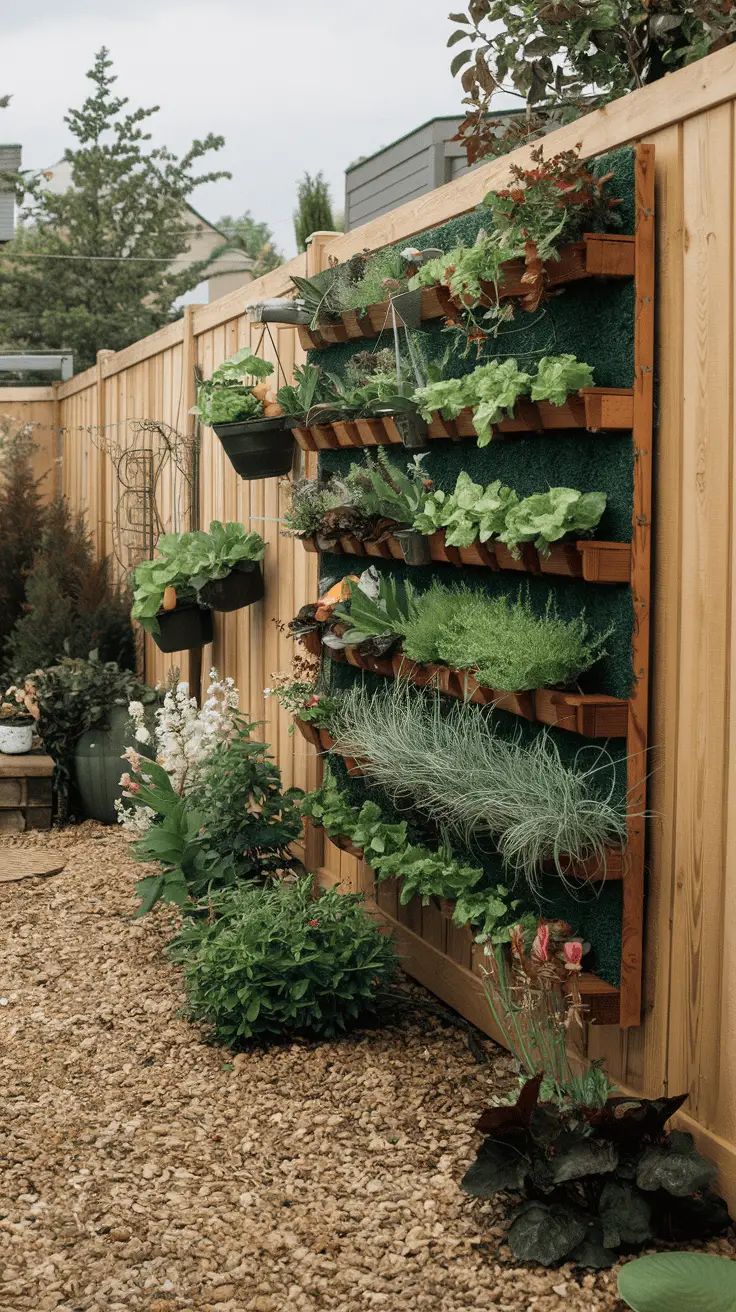
Leave a Reply